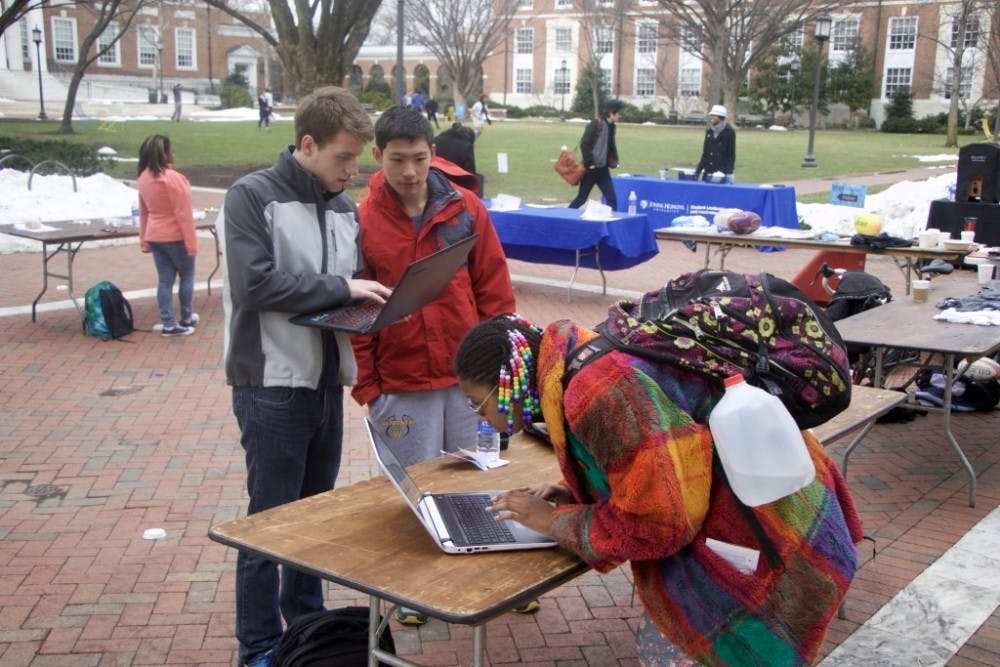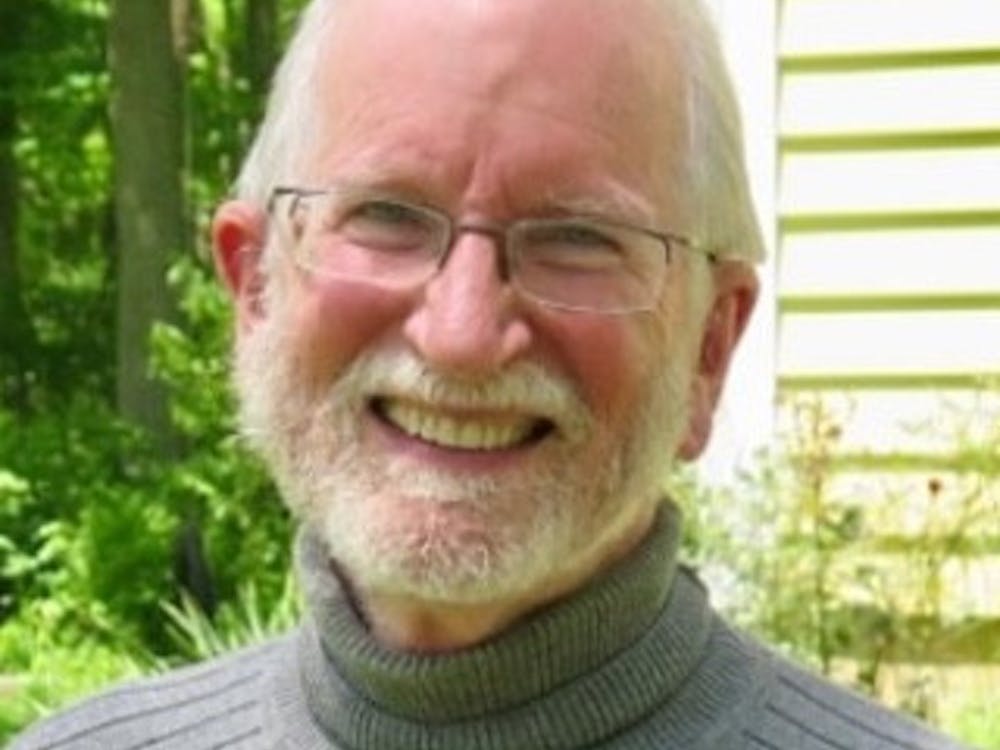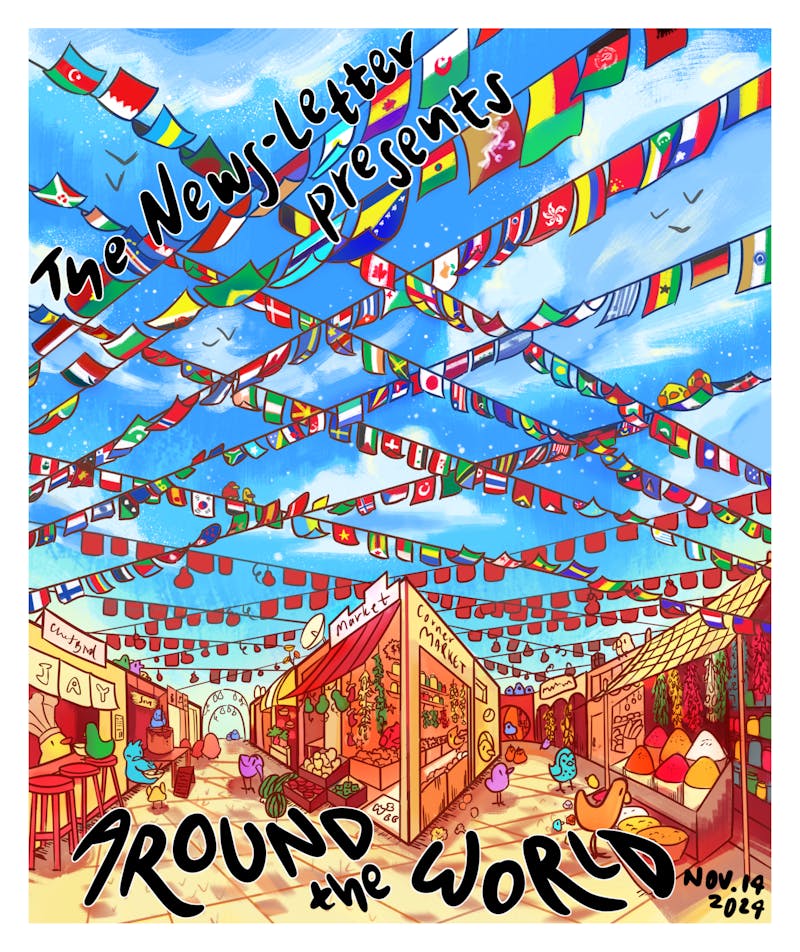This semester, students did not pack the Ralph S. O’Connor Recreation Center for the usual activities fair frenzy. Instead, organizations occupied the Breezeway for five days during the new Student Involvement Week.
Problems with insufficient space and poorly communicated policies complicated this fall’s Student Involvement Fair (formerly called the SAC Fair). Because the Rec Center only fits about half of the nearly 400 student organizations, groups have always had to register for the fair to claim their spot.
This fall, the issue was exacerbated when some student groups were not aware of new policies and found themselves not able to participate in the fair.
The new format of Student Involvement Week (SIW), spread out over Feb. 1-5, eliminated the issue of the Rec Center’s limited space. Each student organization category was assigned a day to table at the Breezeway for two hours, with the tables lining the steps from Keyser Quad down to Wyman Quad.
About 140 organizations registered for SIW, but only about 80 actually participated.
Clifton Shambry, Coordinator for Student Organizations and the creator of the event, said that the new arrangement worked well.
“It brings the clubs to them, rather than them having to come to us,” he said. “Both the student leaders and the students themselves had enjoyed getting to interact and recruit this past week. The change in location has brought [the fair] to the forefront of students’ attention.”
After the fall Student Involvement Fair, Shambry’s office conducted a survey in order to understand the needs of both organizations looking to recruit and students looking to join. Shambry said input from that survey primarily drove the design of this year’s SIW, and a common concern was the inconvenience of the Rec Center.
“They thought that it might be good to have it on the Breezeway because you have that guaranteed audience,” Shambry said. “Faculty, staff, students are all walking by.”
When evaluating the format of the activities fair, Shambry said he didn’t consider looking for different indoor spaces but rather, tried to think outside the box and find a way to go where students are.
The event’s location on the Breezeway was a point of disagreement among student leaders. While some liked the central location on campus, others thought the steps were too busy of an area to be an effective space for raising awareness about clubs.
“They’re going to classes,” sophomore Tony Kim, secretary of Robotics Club, said. “So they probably don’t have a lot of time to chit chat or get to know more about the club.”
Though the Rec Center is farther away, Kim said, everyone knows to go there when an activities fair is happening. At SIW, his group was facing the problem of not being able to reach their target demographic.
“It’s kind of hurtful to the engineering side of the club because the engineering quad is all the way over there, so the engineers we’re trying to target are really not coming around this region,” he said.
Freshman Jocelyn Kim, whose classes took her by the Breezeway several times during the week, noted that there were not very many students who stopped to talk to the various groups stationed there.
“I spend my day walking up and down the Breezeway on my way to class,” she said. “I noticed the tables set up, but I wasn’t really able to stop and look around because I was in a hurry.”
After the event, Shambry said he learned that there was a significant difference between a fair setup in the Rec Center versus tabling at the Breezeway.
“I’m getting the feeling that tabling is a different environment and that tabling may not be the best way,” Shambry said. “I took it as if tabling at the Breezeway is almost similar to tabling in the Rec Center because it’s still sitting at a table — you’re doing the exact same thing, just not in a closed environment.”
Nitin Nainani, president of the College Republicans, did not think that the new format on the Breezeway was an improvement from the Rec Center.
“I think splitting the fair up into several smaller sessions reduced turnout, and the lousy weather certainly didn’t do anyone any favor either,” Nainani wrote in an email to The News-Letter. “I’m also not sure if there was enough advertising for the event. I know having it in the Rec Center and on one day was flawed in its own way, but I personally think that’s the better option. Having all (or most) of the groups in one place at one time is just easier, I think.”
The women’s rugby club, though, had more success at their table.
“Our recruiting process was different in the spring, but having the opportunity to recruit in the center of campus was really exciting,” sophomore Allie Bull, president and captain of the team, said. “Overall the event seems to have been a success and all of our groups got lots of attention from students as they passed by.”
Sophomore Hirsh Shekhar, editor-in-chief of the Hopkins Undergraduate Research Journal (HURJ), thought SIW was most effective for groups that wanted to publicize their name and activities.
“I think for the fall the SAC fair really makes a lot of sense because it’s a one-stop shop to see everything that Hopkins offers,” he said. “But in the spring, when people are less likely to go to the Rec Center to find new clubs, this is a cool way to get your name out there in a very public place where people will still see you.”
Shekhar said that the format was not conducive to talking with and recruiting new members, but like many other groups, HURJ primarily focuses on fall recruitment.
The second component of Student Involvement Week was a showcase of student organizations on Wednesday evening, Feb. 3. Every group that registered for SIW nominated another within their category to give a three-to-four-minute presentation at the showcase. The goal of the event was to provide all types of student groups with a chance to be recognized and put their work on display, an opportunity which is more commonly open to the performing arts groups.
“We want to find ways to recognize the great work groups are doing, not just at the awards ceremony at the end of the year,” Shambry said.
In front of a nearly empty Glass Pavilion, student leaders talked briefly about their groups’ activities, missions and upcoming events. Excluding those presenting, there were fewer than five attendees.
“Attendance-wise, it didn’t go so well,” Shambry said. “I’m not too sure why people weren’t there — we did market it.”
Nainani presented for the College Republicans at the showcase and thought that the idea was well-intended but that the event did not turn out well.
“I think the concept is great, and in general, I’m glad to see more promotion of student groups and their activities,” he wrote. “But I think the timing, weather, and inadequate advertising hurt turnout.”
Nainani praised Shambry’s efforts, though, in planning the SIW and finding an alternative to the Student Involvement Fair.
“[Shambry] is very enthusiastic and very helpful,” he wrote, “and I know he put a lot of time into both the fair and the showcase. I think we’re very lucky to have his support for our organizations.”
Poor marketing for both the showcase and the tabling was a common concern among students. SIW was advertised primarily through Today’s Announcements, OrcaTV and emails to student organization leaders, though none to the general student body.
Shambry did send one email to all students with a Hopkins Groups account in the middle of the week informing them of the showcase and the remainder of the week’s tabling.
“My goal for organizations is that you would also do some of the marketing yourselves for the fair,” he said. “I think it’s a shared marketing because my goal is to support you all, but it’s also your opportunity to market your organization.”
Shambry plans to attempt a showcase again, possibly in both the fall and spring next year.
“I thought it was a great opportunity for people to talk about what they’re doing and for us to learn about what others are doing,” he said. “Obviously there are some things we want to do better like figuring out how we can get people into the space.”
He’s open to the idea of other formats, though, and will be seeking formal feedback before moving forward.
Melanie Levine contributed reporting.

















